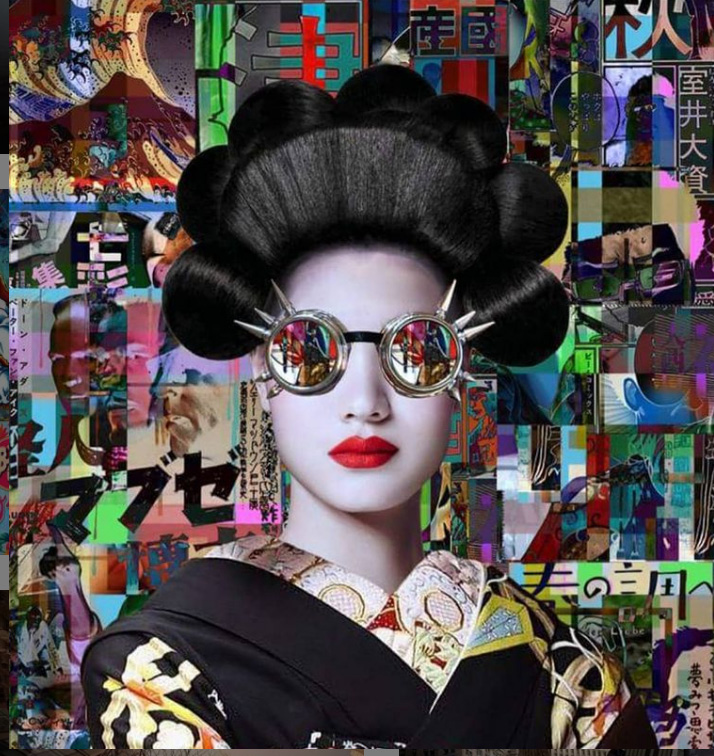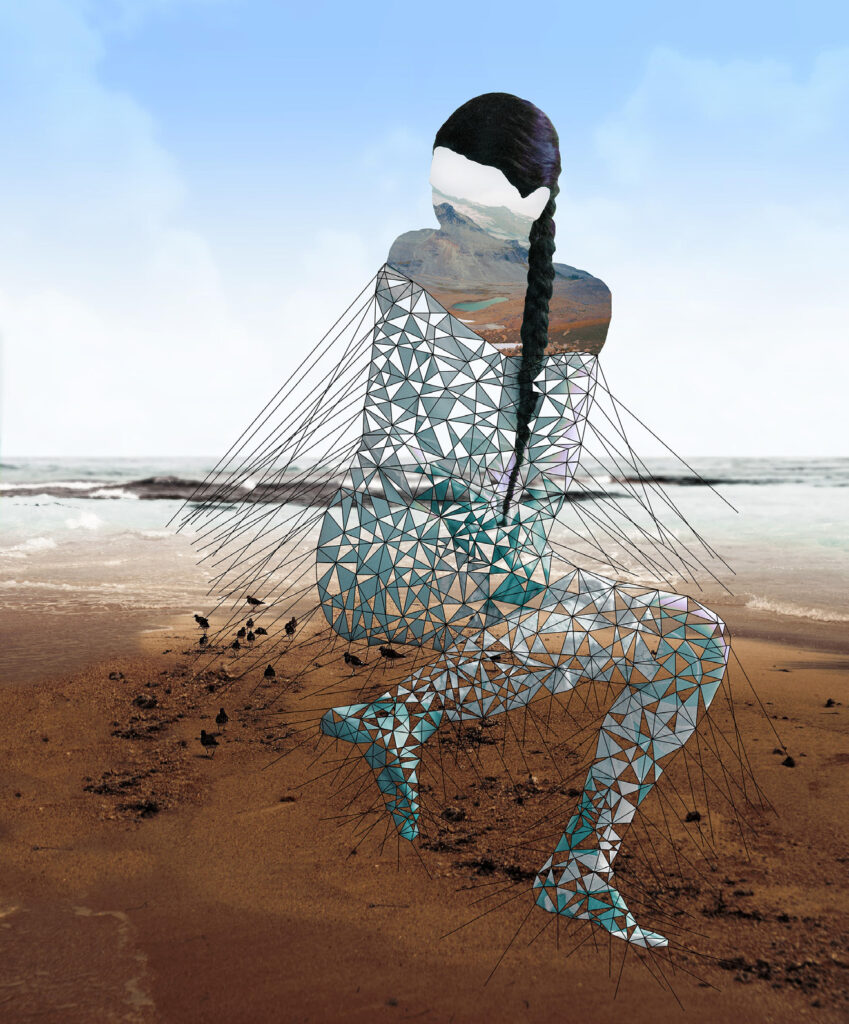
Claudia Furlani is a Brazilian artist creating work that epitomizes the intensity, variety and vibrancy her native country.
Brazil is complex. It is a melding of many diverse cultures and ethnicities in a countryside that offers everything from dense modern cities, to golden sandy beaches and the bio-diverse Amazon with its river, forest and mountains. Its history runs the gamut of ancient human settlements, colonizations, slavery, military coups, dictatorship, economic and political highs and lows. Music and dance hold sway in its culture with Samba and Bossa Nova leading in the popularity stakes and the world-famous annual Carnival that needs no explanation. Claudia Furlani draws on all of this to create her very own distinctive artwork.
She often starts with her photography and through collage, painting and digital editing creates work that has been classified as eclectic post-modernism. Her inspiration is the world in which she lives, whether from a book, movie, something she saw in the street or a story someone told her or a song she heard. For Furlani, her passion is for the intuitive creative process.
Furlani’s photographs are always elegant and have an ethereal quality about them. Adjusting the lighting and color she is able to induce a three-dimensional, dream-like quality. For her more complex works she will deconstruct several photographs to rebuild her own unique universe in a tight jigsaw-like fashion that reminds us of Cubism without the outlined geometric shapes. Many of her pieces also have a surrealist quality to them, challenging our perspective of reality. All her images drop the viewer into a vortex of complex narratives. She explains that she likes to include “vestiges of stories…and submerged memories.”

As a child her mother encouraged her interest in the arts, sending her to drawing, painting, piano and ballet lessons. She also loved the subscription to the “Genius of the Paint” series which would come weekly and seeded possibility in her young mind. She studied art at the University of São Judas Tadeu and later a post-graduate degree in art therapy. The latter was sparked after her daughter who had a rare syndrome requiring years of therapy passed away. Furlani has been able to help many others with her therapy skills and her dream is to build an art school that is able to offer art as therapy.
When asked about the success she has achieved to date in her art career, it is telling that she says “I am very happy when I receive a message from someone who visited an exhibition of mine or who was my student and tells me that [they] decided to enter the world of the arts …influenced by my work…In my opinion, this is the best prize that an artist can win.”

Portraits are also a signature of Furlani’s work. They are always bold, striking and playful. To the surprise of many the Japanese is motif is often seen in her works, influenced in part due to the presence of the largest community of Japanese people outside of Japan who started arrived in Brazil in the early 1900s, and by the many gifts and stories that her father brought back from business trips to the Far East.
Brazil has had its share of good and great artists starting with the 25,000-year-old cave paintings in Serra da Capivara to the northeast of the country. Their influences have been multitudinal and so lead to painter Emiliano di Calvacanti (1897 – 1976) to strive to define Brazilian art without the overt influence of European artists which started with the Portuguese colonists who brought Baroque art to the country in the 1500s.
“art is like a mirror that offers [to let] us to see ourselves.
Art questions us and…when we force ourselves
to respond, it [becomes] a form of transformation.”
There are several artists who have achieved this desire for nationalistic expression with their own particular styles – the bold simplicity of Tarsila do Amaral, the vibrant and extensive color palette and storytelling of Eduardo Kobra, Romero Britto’s pop and fun, Beatriz Milhazes bright colors and geometric designs. Furlani’s works are also a reflection of her homeland crossed with her personal life and expression – vibrant, colorful, full of humor, drama and storytelling with a generous serving of empathy and compassion.

She explains that “art is like a mirror that offers [ to let] us to see ourselves. Art questions us and …when we force ourselves to respond, it [becomes] a form of transformation.” This is what drives her to continue to evolve and develop her style, creating new unique pieces that nonetheless has a signature that is recognizably Claudia Furlani’s work.

She treasures the freedom of being in her studio every day and doing what she loves. “I wouldn’t know how to live any other way.” G&S





Leave a Comment